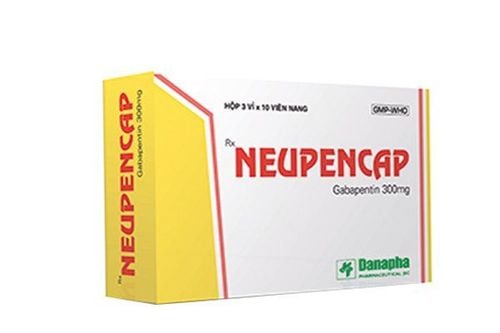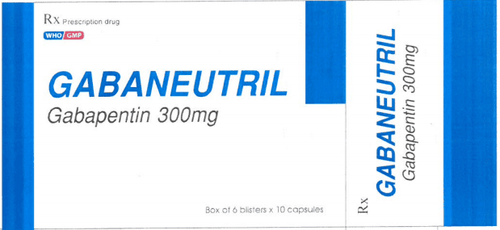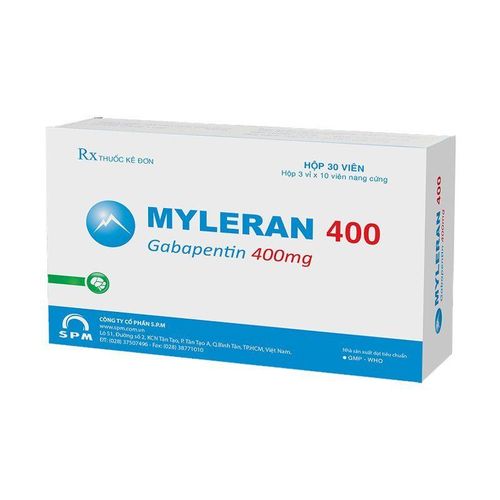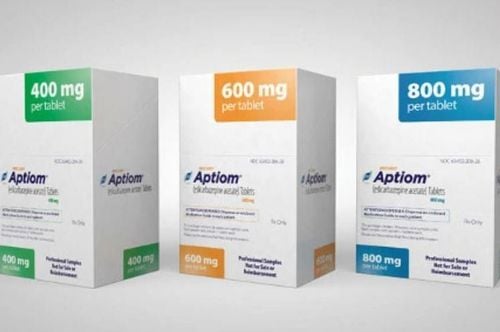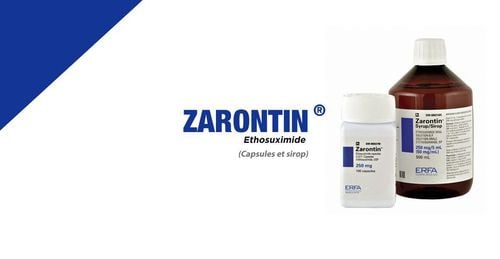This is an automatically translated article.
Neurogap drug is a drug with the main ingredient being Gabapentin and other excipients in a sufficient amount. This drug belongs to the group of psychotropic drugs with anticonvulsant effects.
1. What is Neurogap?
Neurogap drug belongs to the group of psychotropic drugs with anticonvulsant effects, supportive treatment in partial seizures. Neurogap drug is made in the form of capsules, packing is a box of 10 blisters, each blister contains 10 capsules - 300mg.
Neurogap drug is composed of the main active ingredient, Gabapentin. Excipients just enough include: Lactose, corn starch, magnesium stearate, purified talc, povidone K-30.
1.1. Pharmacodynamics Active ingredient Gabapentin is an antiepileptic, anticonvulsant, drug related to brain gamma aminobutyric acid (GABA).
1.2. Pharmacokinetics of the active substance Absorption: As the dose is increased, the bioavailability of gabapentin decreases. The absolute bioavailability of gabapentin capsules is approximately 60%. Food including high-fat diets had no effect on the pharmacokinetics of gabapentin. Distribution: Gabapentin is distributed throughout the body, enters breast milk, and is very low (<3%) bound to plasma proteins. The volume of distribution of the drug is 58 ± 6 liters in adults. Elimination: The plasma half-life of gabapentin is independent of dose and averages 5-7 hours. Gabapentin is eliminated from plasma by hemodialysis. Therefore, dose adjustment is required in patients with impaired renal function or undergoing hemodialysis. Gabapentin plasma concentrations in children are similar to those in adults.
2. What are the effects of Neurogap?
Neurogap drug with main ingredient Gabapentin is indicated for use in the following cases:
Epilepsy:
Gabapentin is indicated as monotherapy in the treatment of partial seizures with or without generalization. secondary in adults and children over 12 years of age. Gabapentin is indicated as adjunctive treatment in the treatment of partial seizures with or without secondary generalization in adults and children 3 years of age and older. Neuropathic pain: Gabapentin is indicated for the treatment of pain caused by peripheral nerves in adults 18 years of age and older.
3. How to use Neurogap
3.1. How to use Neurogap For the drug Neurogap, users use it orally. The time of taking the drug is completely independent of the meal. Neurogap is used in combination with other antiepileptic drugs.
3.2. Neurogap Dosage Neurogap Dosage Neurogap should be followed as directed by your doctor.
In the treatment of epilepsy:
For adults and pediatric patients over 12 years of age: The effective dose range of gabapentin is from 900 to 3600 mg/day, divided into 3 times/day, when used in high doses can be divided into 4 times/day depending on the specific case. The time interval between each dose should not exceed 12 hours. For pediatric patients 3 to 12 years of age: The effective dose of gabapentin is 25 to 25 mg/kg/day in three divided doses. For patients with impaired renal function and on hemodialysis, the dose should be reduced, the appropriate dose should be adjusted according to the creatinine clearance, according to the doctor's instructions. In the treatment of pain caused by inflammation of the peripheral nerves, pain after shingles:
Adults: The initial dose is 900 mg/day in 3 equally divided doses and increased if necessary, based on the specific response of the patient. patient until the maximum dose of 1800 mg/day is reached. Elderly: Dosage may be low due to poor kidney function, follow doctor's instructions. 3.3. How to handle when forgetting, overdosing Missed dose:
If you miss a dose while taking the drug, take it as soon as possible (usually it can be taken 1-2 hours before the time ordered by the doctor). However, if it is almost time for your next dose, skip the missed dose and take your next dose at the prescribed time and do not take a double dose.
Overdose:
Acute overdose of Gabapentin has been reported. Symptoms commonly seen in overdose cases: double vision, speech disorders, somnolence, coma and diarrhea. All patients recovered after supportive treatment.
Gabapentin can be removed from the body by hemodialysis.
In case of emergency or overdose with dangerous manifestations, it is necessary to immediately notify the nearest local health facility for timely handling.
3.4. Contraindications to the drug Neurogap Contraindicated to use Neurogap drug with people who are hypersensitive or allergic to Gabapentin or any of its ingredients.
4. Note when using Neurogap
4.1 Precautions and warnings for the use of Neurogap: Do not stop taking antiepileptic drugs suddenly because it may increase the frequency of seizures. Gabapentin must be taken exactly as prescribed by your doctor. The drug may cause a false-positive result in proteinuria. Use in the elderly: Use with caution in people with impaired renal function. Use the dose as directed by your doctor. Operators of vehicles or machines: Gabapentin may cause dizziness, somnolence, and other symptoms of CNS depression. Therefore, the patient should not drive or operate machinery until a certain level of alertness is attained. Pregnant women and lactating mothers: Note that the drug should only be used by pregnant women and nursing mothers when absolutely necessary and carefully weighing the benefits that outweigh the risks. 4.2 Side effects of Neurogap When using Neurogap, patients may experience unwanted side effects such as:
Nervous system: Movement loss coordination, nystagmus, fatigue, dizziness, sadness sleep, memory loss. Children from 3 to 12 years old have neurological problems such as anxiety, behavior changes (crying, hostile attitude...) Digestive system: Indigestion, constipation, abdominal pain, diarrhea . Cardiovascular system: Increased blood pressure. Respiratory system: Rhinitis, pharyngitis, cough, pneumonia. Rare and rare side effects when using Neurogap drugs:
Nervous system: memory loss, aphasia, depression or mental changes, temperament, personality disorder, decreased motor function. Digestive system: Digestive disorders, bleeding gums, stomatitis, loss or disturbance of taste, peptic ulcer, colitis. Cardiovascular system: Hypotension, angina, peripheral vascular disorders, palpitations. Other: Weight gain, enlarged liver. Patients should inform the doctor about the unwanted effects encountered when using the drug.
4.3 Neurogap Drug Interactions When two or more drugs are used at the same time, drug interactions can lead to antagonism or synergism. Take 2 hours apart when used with antacids. It is necessary to carefully consider and consult a doctor and pharmacist when using drugs with food, alcohol and tobacco. 4.4 Storage of Neurogap Medicines Store the drug at a temperature below 30°C, away from moisture and direct sunlight. Keep out of reach of children and away from pets. Above is all information about Neurogap drug. Neurogap is a prescription drug that has anticonvulsant effects and is used to treat epilepsy. Patients are absolutely not allowed to buy drugs for treatment without the guidance of a doctor.
Please dial HOTLINE for more information or register for an appointment HERE. Download MyVinmec app to make appointments faster and to manage your bookings easily.




